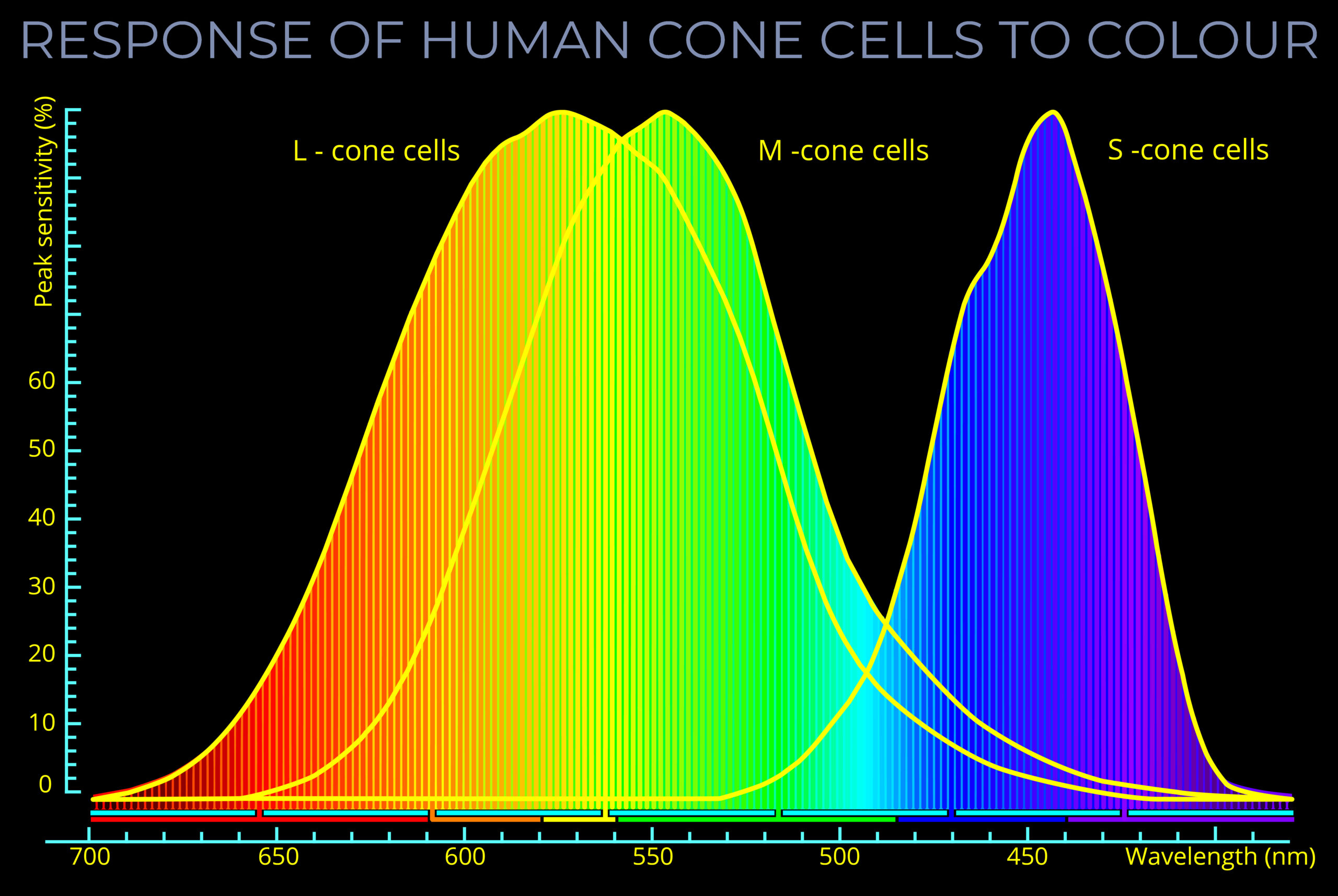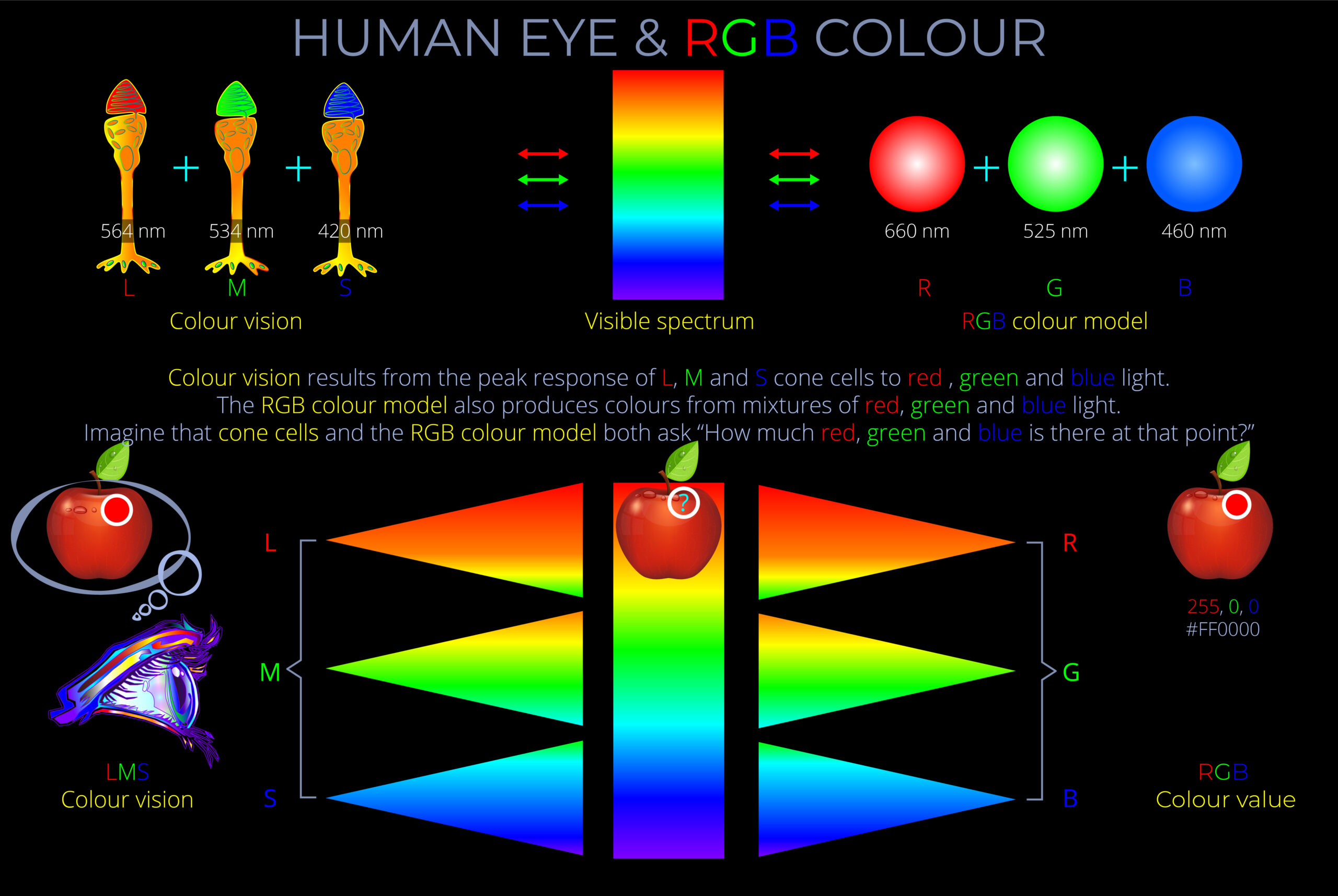- Measuring human visual responses to light is not straightforward because the eye is a complex and intricate organ.
- An internationally recognized system of measurements, known as the CIE system, was established in 1931 by the Commission Internationale de l’Eclairage (CIE).
- The Commission established the typical spectral responsiveness of the human eye to wavelengths across the visible spectrum and compiled the data into a photopic curve.
- The CIE’s photopic curve shows that, in bright light, the strongest response of the human eye is to the colour green with less sensitivity towards the spectral extremes, red and violet.
- A second set of measurements of the typical responsiveness of the human eye to wavelengths across the visible spectrum at low levels of light, (where determining colour differences is difficult), resulted in data compiled into the scotopic curve.
- Having defined the spectral response of the human eye, the CIE sought a standard light source to measure luminous intensity.
- Luminous intensity is a measure of how bright a light source appears to the human eye, and it is typically used to describe the brightness of light sources such as light bulbs, lamps, and LEDs.
- The first source, which led to the development of the terms footcandle and candlepower, was a specific type of candle commonly used in the 18th and 19th centuries before standardised artificial light sources were developed.
- In 1948, the standard was redefined for better repeatability. It was named the International Candle and defined as the amount of light emitted from a given quantity of melting platinum.
- Photometry is the science concerned with measuring the human perception of light.
- Measuring human visual responses to light is not straightforward because the eye is a complex and intricate organ.
- An internationally recognized system of measurements, known as the CIE system, was established in 1931 by the Commission Internationale de l’Eclairage (CIE).
- The Commission established the typical spectral responsiveness of the human eye to wavelengths across the visible spectrum and compiled the data into a photopic curve.
- The CIE’s photopic curve shows that, in bright light, the strongest response of the human eye is to the colour green with less sensitivity towards the spectral extremes, red and violet.
- A second set of measurements of the typical responsiveness of the human eye to wavelengths across the visible spectrum at low levels of light, (where determining colour differences is difficult), resulted in data compiled into the scotopic curve.


